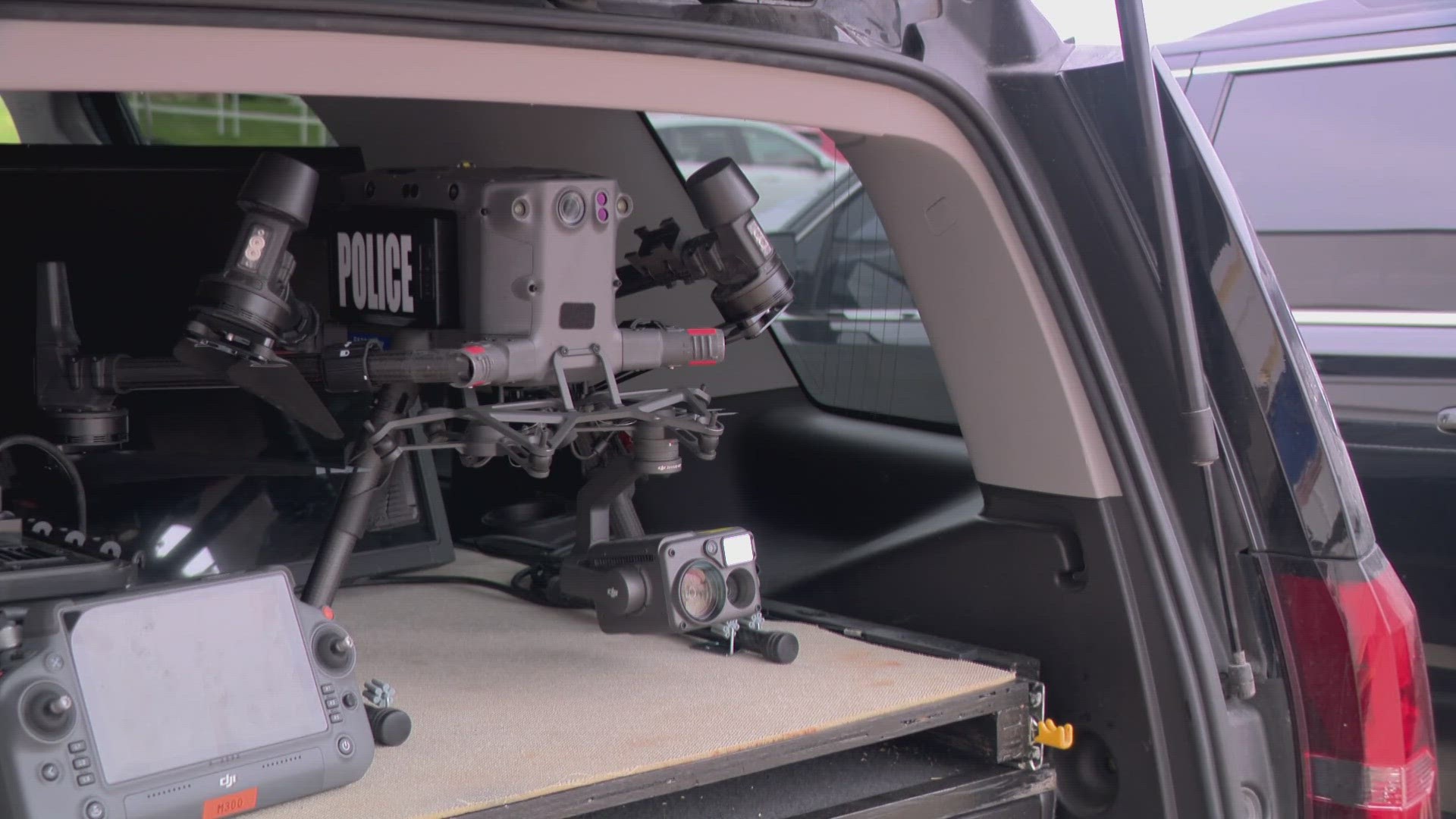ST. CHARLES COUNTY, Mo. — An armed and barricaded home invasion suspect was so eager to turn himself in to police that he helped free a police robot that got stuck on a door jamb before he walked out with his hands up.
It happened June 4 in St. Peters after St. Charles County SWAT officers sent in a drone armed with a camera to prompt him to leave the house peacefully. Three hours before that, the man had kicked in the front door and refused to let the people inside leave.
It’s one of two successful arrests of barricaded suspects involving drones, said St. Charles County Chief Kurt Frisz.
“I think they don't know really what's going on,” Frisz said. “They don't know if this thing is going to shoot them, or Taze them or what it’s going to do to them.
“It doesn't do any of that, but we're able to get eyes on and communicate without even entering the building. I think this is what modern-day SWAT looks like.”
It’s also how Frisz believes policing in general will soon begin to look; as fewer people join the profession, officers are increasing their reliance on technology.
“It’s a force multiplier,” Frisz said.
Frisz’s department is now planning to add its 11th drone to its fleet.
In addition to the drones, the department is also more than doubling its number of License Plate Recognition cameras.
In the next 60 days, Frisz says anyone driving into the county can expect to see one parked along all of the entry points. Right now, the department uses about 20 of them – many at county parks.
Soon, 43 of them will scan cars for license plates connected to serious crimes, so police can track their movements in real time, Frisz said.
The department’s policy requires any data the cameras capture to be destroyed within 30 to 90 days, Frisz said.
“There's no third-party vendors involved,” he added. “It’s secure.”
Still, civil liberties groups have expressed concerns about how often police are monitoring the public and the potential for that information to be abused.
“I understand people's concerns about it, but if you're not wanted for a felony or a serious misdemeanor crime, then you have no worries,” Frisz said. “We're not looking for someone that has misdemeanor traffic warrants or failure to appear traffic warrants.”
The St. Charles County Police Department previously added to its camera technology in 2021, equipping every police uniform and vehicle with cameras that automatically activate in a variety of high-stress situations. The cameras send out real-time location information, which helps other first responders find officers if needed.
In 2022, more than 300 traffic signals, 75 County police vehicles, and 125 firetrucks and ambulances were upgraded with technology to give green lights to emergency vehicles responding to an incident.
And earlier this year, the Police Department's Crime Lab added new DNA analysis software that vastly reduces the time required to process mixed DNA from multiple sources, so suspects can be identified quicker.
Frisz said that for as helpful as technology has become – especially in a profession with dwindling rosters – it cannot replace officers. Police helicopters are still valuable tools because of the officers in them.
“Drones cannot rescue people,” Frisz said.

